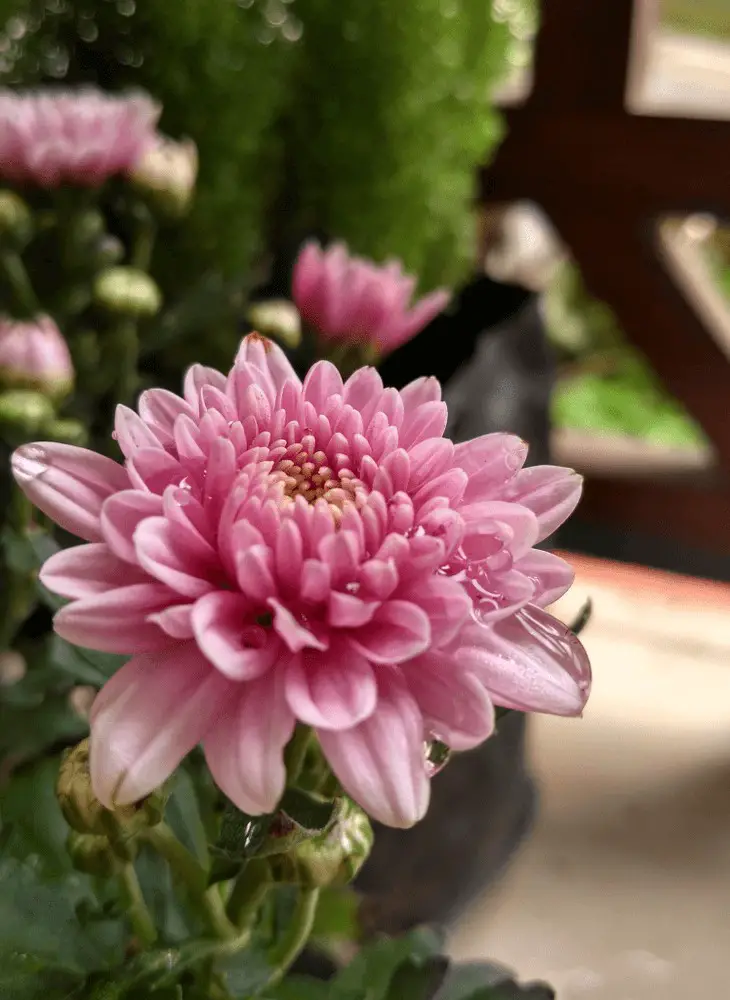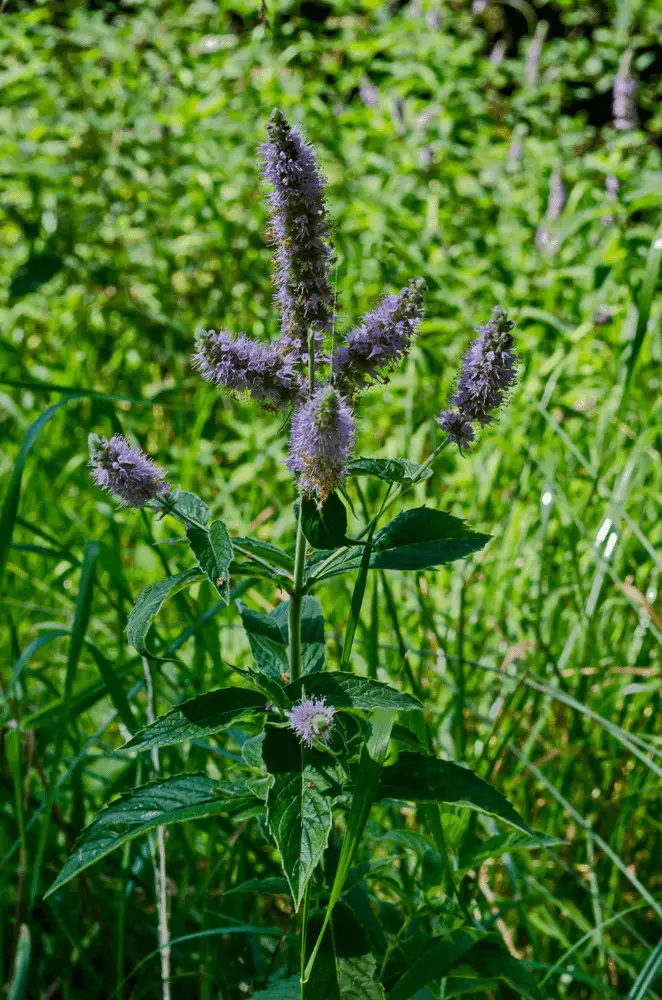Natural Tick Repellent: 8 Plants That Repel Ticks

Plants have evolved unique strategies to defend themselves against predators, as they can’t physically escape. Chemical defenses are a primary mechanism for many plant species to deter herbivores and other organisms from consuming them. This natural defense system allows plants to protect themselves from insects, rodents, and other pests.
If you’re struggling with tick issues, consider incorporating these 8 plants into your environment: Garlic, Catnip, Rosemary, Rue, Wormwood, Chrysanthemum, Pennyroyal (also known as Squaw Mint), and Eucalyptus (Gum Tree). Not only are these methods environmentally friendly but also effective in preventing ticks from attaching to you or your skin in an alarming manner.
Garlic

Garlic, scientifically known as Allium sativum, is a multifaceted insect repellent that can also serve as a deterrent for humans, albeit inadvertently, should one consume excessive amounts and develop garlic-scented breath. Despite its culinary fame, the plant’s primary function lies in repelling pests. By planting garlic strategically throughout your garden, you can harness its natural properties to keep unwanted visitors at bay.
The Italian palate may be particularly fond of this versatile ingredient, but it’s not just about cooking; having a ready supply in your own backyard is a wise move. It’s essential to note that ingesting small amounts of garlic won’t provide the desired pest-repelling effects. Instead, plant the bulbs to release their potent aroma into the air, effectively warding off ticks and other unwanted garden visitors.
Crushed garlic cloves can also be used to create a quick-drying juice that repels ticks in your yard.
Catnip

Catnip, or Nepeta cataria, is a plant with a potent aroma that has a profound effect on felines. When cats ingest the plant, it produces a calming and relaxing sensation, often referred to as a ‘mellow stone effect.’ In contrast, ticks and other insects are repelled by its strong scent, making it an effective natural deterrent. The plant’s flowers produce a unique oil called nepetalactone, which is not only loathed by insects but also adored by cats.
This harmless plant is easy to cultivate, even for novice gardeners, and its low-growing nature makes it a great addition to any outdoor space. Notably, the oil extracted from catnip’s flowers has been found to be intolerable to insects, making it an excellent safeguard against unwanted pests.
Rosemary

Rosemary, a popular kitchen herb, is surprisingly easy to cultivate in your garden or even on a balcony. With proper watering and care, this versatile plant thrives. Its uses extend beyond the kitchen – it’s also been used as herbal medicine to aid in wound healing. One of its most notable properties is its ability to repel ticks and other unwanted insects. The pleasant scent of rosemary is undeniably sweet to humans, but unbearable to many insects, including mosquitoes and fleas.
This natural deterrent drives them away from your home, making it a valuable addition to any outdoor space.
Rue

While ticks may think they’ve found a paradise in your garden, the moment you introduce rue into the mix, they’ll quickly change their minds. The evergreen herb, Ruta graveolens, boasts blue metallic leaves and possesses insect-repelling, antifungal, and antimicrobial properties. Its essence can be used to treat foot fungus or disinfect hands. The pungent aroma of rue is notorious for sending ticks and fleas packing, making it an excellent alternative to traditional repellents.
Moreover, this herb has a peculiar effect on felines – cats detest its scent with equal passion, rendering it an effective deterrent against stray cats. By planting rue in your garden instead of catnip, you’ll not only keep ticks at bay but also protect yourself from the risks associated with rabies and costly vaccinations. It’s a two-for-one solution that will leave both unwanted visitors seeking greener pastures elsewhere.
Wormwood

Wormwood, a bitter herb also known as absinthe (Artemsia absinthium), has been utilized medicinally and as a flavored drink. Its leaves can be used to brew tea, while its shrub produces yellow flowers that can grow up to 3-feet tall. Beyond its traditional uses, Wormwood is renowned for its insect-repelling properties, effectively warding off ticks, fleas, and other bugs.
To keep these pesky insects at bay, simply rub the freshly picked leaves over clothing or along your arms to repel mosquitoes. The plant’s resin, while toxic in large quantities, can be used as a safer alternative to DEET-based insecticides. Additionally, Wormwood bundles can be placed strategically in doorways and closets to keep unwanted insects from entering. This natural insecticide offers a bee-friendly solution for those seeking an effective yet eco-conscious approach.
Chrysanthemum

Chrysanthemums are a versatile plant species that not only repel ticks, but also add a touch of elegance to any garden. Both novice and experienced gardeners alike appreciate cultivating this daisy for its balcony or plot, thanks to its vibrant flowers. As a member of the daisy family, chrysanthemums have been bred over time to produce a diverse range of flower colors, with various varieties offering distinct hues.
Beyond their visual appeal, these daisies are effective at repelling ticks, as well as other unwanted insects like moths, fleas, and various bugs from your yard. This impressive repertoire makes them an attractive addition to many gardens.
Pennyroyal (squaw mint)

Pennyroyal, a natural insect repellent belonging to the mint family, is renowned for its potency in deterring insects. Its minty menthol aroma is particularly effective at warding off unwanted pests. Notably, pennyroyal’s ability to spread rapidly makes it an ideal addition to any garden. Simply plant it and you’ll have a natural, organic insect repellent on your hands.
This versatile herb not only repels insects but also demonstrates remarkable efficacy in reducing tick numbers, making it a valuable asset in any outdoor setting. Additionally, pennyroyal has been known to double as a mosquito-repelling plant, further solidifying its reputation as a reliable and all-natural pest deterrent. As an alternative, other mints from the mint family, such as citrus mints, sweet mints, spearmints, and peppermints, can also be used for similar purposes.
Eucalyptus (Gum Tree)

While eucalyptus oil is renowned for its invigorating aroma and skin-soothing properties, the plant itself also boasts impressive health benefits. Its distinctive silver-dollar leaves are a testament to its effectiveness in treating various ailments. But what about its potential as a tick remover and repellent? The answer is yes – eucalyptus can serve both purposes with ease.
Despite being useful for skincare and household remedies, it’s crucial to exercise caution when using the plant against insects like ticks or flies, as it can be harmful if not used properly. Interestingly, eucalyptus oil has been registered as a miticide and insecticide since 1948, making it a valuable addition to your arsenal of natural tick repellents. By planting eucalyptus in your garden, you’ll not only enjoy its many health benefits but also ward off tick infestations.
Just be sure to opt for the potted variety, as some species can grow up to 130 feet tall.
The Bottom Line
Ticks may seem harmless, but they can be notoriously difficult to remove once they’ve latched onto your skin. Despite their small size – sometimes no larger than a poppy seed – they can inflict significant discomfort, much like a prickly cactus thorn. These tiny vampires have an uncanny ability to cling to you like a stubborn briar patch, making them a persistent nuisance to remove.
If not handled carefully, the process of removing ticks can leave behind pieces of their bodies on your skin, which is hardly ideal. To make matters worse, ticks are capable of transmitting diseases, making it essential to take steps to safely and effectively remove them from your skin. For this reason, it’s crucial to arm yourself with sharp tweezers and some rubbing alcohol. As a last resort, soap and water can also be used to remove these unwelcome critters.
Fortunately, there is an alternative approach that avoids the hassle of tick removal altogether: planting tick-repellent plants in your yard. Not only are these natural barriers safe for the environment, but they’ll also provide a layer of protection against these pesky little vampires.






